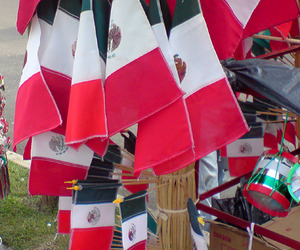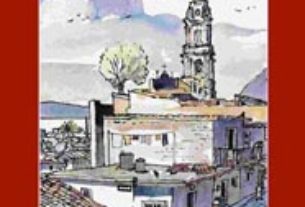
© Daniel Wheeler, 2009
By an amazing historical coincidence, calendar year 2010 is both a centennial and bicentennial for Mexico. This is great for students, as it’s a mnemonic device to help them remember dates! And as you might well imagine, it leads to 2010 being a great national celebration for Mexico.
Every nation needs symbols, traditions and celebrations to affirm its identity and pass its culture to the next generation. That’s why national holidays are important parts of national identity.
In Mexico, Independence Day (September 15th-16th) and Revolution Day (November 20th) are both important patriotic celebrations. And this year is special because it marks both the bicentennial of what became the Mexican independence movement (in 1810) and the centennial of the start of the Mexican Revolution (in 1910).
The dual anniversaries provide an opportunity to teach and reflect upon the complex and intriguing history of Mexico. And who knows, maybe even learn lessons for the future.
The bicentennial celebrates the independence of Mexico from Spain in the early 19th century.
The uprising that became the Mexican independence movement began in 1810, on the night of September 15th/16th. That’s the night that Catholic priest Miguel Hidalgo gathered the people in front of a church, where he gave a speech and rang a bell (similar to our own Liberty Bell), calling the people to action. This occurred in the central Mexican town of Dolores, Guanajuato, now referred to as Dolores Hidalgo.
Hidalgo himself was executed in 1811, but the struggle continued. Eventually, Mexico became independent from Spain in 1821. And that’s another historical coincidence, as 1521, 300 years earlier, was the year in which the Aztec Empire fell and Spanish rule began.
The Mexican War of Independence is not to be confused with the Mexican Revolution, which occurred a century later. The Revolution began on November 20th, 1910, as an uprising against longtime dictator Porfirio Diaz. After driving Diaz out of the country in 1911, revolutionary factions fought each other in a bloody civil war. The Revolution lasted from 1910 to 1920, more or less. (There is disagreement over its end point).
One of the most concrete results of the Revolution was the current Mexican Constitution, drafted in 1917. For Americans, the most famous figure in the Mexican Revolution is Pancho Villa.
Both Independence Day in September and Revolution Day in November are popular observances celebrated annually. This year is the bicentennial of the former and the centennial of the latter.
Therefore, in Mexico a number of observances are taking place this year, and not only in September and November. Current president Felipe Calderon has declared the entire year 2010 as the Año de la Patria (Year of the Nation). At the federal government level, planning began in 2006, during the administration of Vicente Fox, the previous president.
So this year, there are cultural, artistic and educational programs aplenty. There are historical commemorative ceremonies, artistic exhibitions, conferences and radio shows. Large digital countdown clocks have been installed in cities across Mexico. Major media companies Televisa and TV Azteca compete with each other to produce programming related in some way to the bicentennial/centennial. In 2009, the president lit a “Bicentennial Flame,” which is traveling around the country. Seminars have been scheduled, museums remodeled, archaeological sites opened, and books are being published.
Motorists traveling in many parts of Mexico can see the Ruta 2010 signs on the highway. These routes commemorate and follow military movements and historical figures in the Independence and Revolutionary periods. For a traveler interested in history, this would be a fascinating way to see where Mexican historical occurrences really happened. Those who are interested, click here.
Besides the federal government, the governments of all 31 Mexican states and the Federal District have their own Bicentennial/Centennial committees. In the northern state of Chihuahua, the bicentennial/centennial coincides with an even older anniversary — the foundation of Chihuahua City 300 years ago. (Really 301 years ago, as it was founded in 1709 — but that’s close enough). So Chihuahua has a triple celebration.
In June, the Mexican port of Veracruz played host to an international regatta featuring tall sailing ships, which had sailed in a five month voyage beginning in Brazil. The fleet included vessels from 12 nations, including Mexico and other Latin American nations, several of which are also celebrating bicentennials within the space of a few years. The US, Portugal and the Netherlands also participated.
There was even a sailing ship in the regatta from Spain, the country from which Mexico became independent. And why not? Back in 1976, the British participated in our US Bicentennial celebration by loaning us a copy of the Magna Carta for display.
The Mexican Bicentennial/Centennial is expanding beyond the nation’s borders. There are exhibitions of art from different stages of Mexico’s history in various foreign capitals. Mexican embassies and consulates are hosting cultural events abroad. There’s even a global mariachi contest, open to musicians of any nationality. In fact, one of the requirements of the mariachi competition is that contestants can’t be residents of Mexico!
On the Mexican government Bicentennial/Centennial website, a special message to readers, in English, explains some of the goals of the celebration:
“In 2010, Mexico will commemorate the bicentennial of its Independence movement and the centennial of its Revolution with an extensive program of events. All Mexicans and foreign citizens alike are invited to participate in these events to learn about and reflect on Mexico’s past… We will celebrate Mexico’s history in every corner of the country and abroad through a variety of means… These bicentennial and centennial celebrations are occasion for a big fiesta that all of society should make its own. Let the 2010 festivities bring us a new understanding of our past and unity for the future. Join us!”
And on that note, may all Mexconnect readers wish Mexico a happy Bicentennial/Centennial!
Allan Wall recently returned to the US after residing many years in Mexico.

